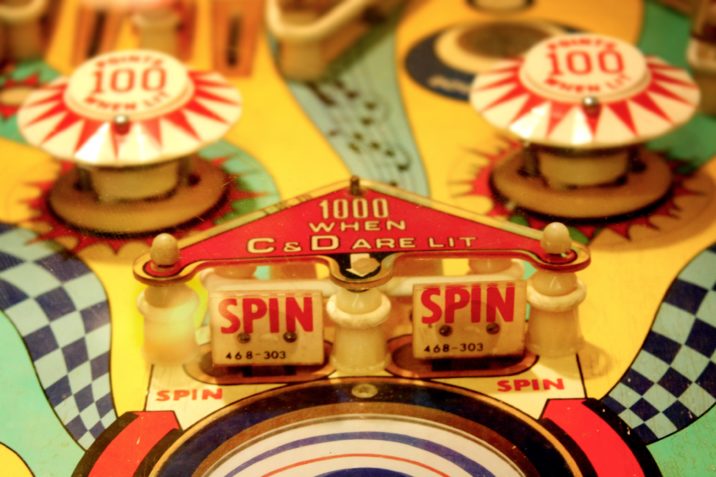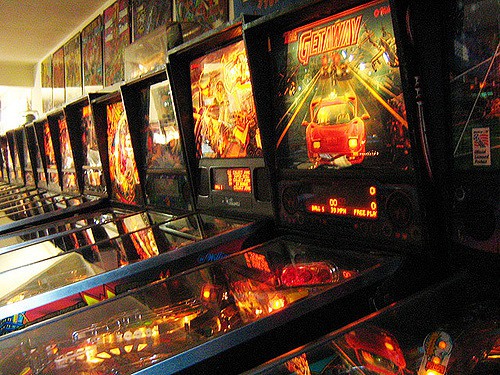Of all arcade games, the history of pinball is the most strangely fascinating story about video games. This overview explains the bizarre and exciting history of pinball adapted to 2022.

Bagatelle is the Fore-parent of Pinball
To understand pinball history, you need to go back to the 1700s in France. During this time, the royals and aristocrats of France enjoyed playing croquet as a significant social pastime. The problem was weather did not always cooperate.
The French came up with a game called Bagatelle. This game essentially was a board with wooden pins and a ball. The objective was to use the pins to maneuver the ball into a hole. At about the American Revolution, this game migrated to the New World.
The Official Launch of Pinball was in 1871
Technically speaking, pinball was invented in 1871 by Montague Redgrave of Ohio. He is responsible for turning what, by that time, was the century-old Bagatelle game into the initial pinball game.
The man was awarded what was described as a patent for his “improvements in bagatelle.” His improvements included a coiled spring, a slope, and smaller marble-sized. The so-called “Parlor Table Bagatelle” game became popular in pubs and taverns. People with high scores would be given free libation.
Coin Operated Pinball Machines
During the Great Depression, coin-operated pinball machines became “a thing.” The coin-operated pinball machine became a form of cheap entertainment that nearly everyone could afford. Coin-operated pinball machines could be found across the United States.
Pinball Prohibition History
For almost 40 years, pinball was banned nearly everywhere in the United States. The pinball ban or prohibition in New York is a prime example of what happened from the mid-1940s until the 1970s.
In the 1940s, some pinball machines started paying off winners. For this and other reasons, pinball became considered by many government officials to be a game of chance. This remained the position of governmental and law enforcement officials even though it was during this period that flippers were added to the game, which added an element of skill to play.
The Importance of Flippers to Pinball Machines
Before the advent of flippers on pinball machines, there was no set way a player could use skill to maneuver a ball. The best a player could do would be to tilt or move the entire game to manipulate the ball’s movement.
After the introduction of the flipper, some cities, like the Big Apple, became more intent on enforcing the pinball prohibition. They argued that pinball was dangerous to children.
The Babe Ruth Move Ends Pinball Prohibition
Once the pinball prohibition went into effect, pinball machines and their owners went into hiding. The ban in some cities proved to be aggressively enforced. For example, in New York City, the police smashed pinball machines with sledgehammers.
The New York City pinball ban occurred in a courtroom during many named when Roger Sharpe in 1976. He maintained that pinball was not a game of chance but rather skill.
As Babe Ruth did in the 1932 World Series, Sharpe predicted the exact course of the ball — this time a pinball machine. His performance convinced the court that pinball was a harmless game of skill.
Video Games Trump Pinball
During the 1980s, video games nearly did in pinball machines altogether. Ultimately, pinball manufacturers fought back and created machines that mimicked some of the features found in video games.
Addams Family: Most Popular Pinball Game in History
The 1990s brought about a bit of a come regarding pinball. This was partly due to the merger of two of the leading manufacturers in the industry: Bally and Williams.
Ultimately, the Addams Family pinball machine became the most popular. It had a production rate of over 20,000 devices.
Pinball History Today
In this day and age, pinball is most often played online. The storied game of pinball has now ended up primarily in cyberspace.
With that said, classic pinball machines have become something of collectors’ items. There is an important caveat to this idea of pinball machines as collector’s items. Yes, they are collected. But, when ordered, they typically are displayed and usually played. This includes vintage machines that are part of collections such as pinball museums the world over.




